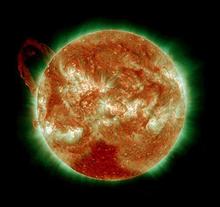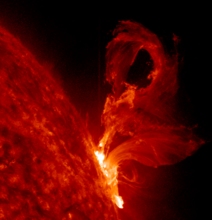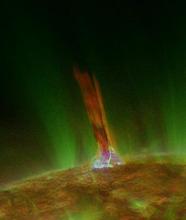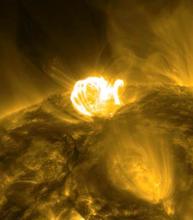news
Submitted on 2015-04-02
Around noon on 27 March, a giant wall of solar plasma (charged particles) propelled itself into space. A movie of this event can be seen here.

Submitted on 2015-03-26
Over the last 2 weeks, solar activity was dominated by the small but complex sunspot group NOAA 2297. Under its dictatorship, no less than 97 "common" C-class flares, 23 "medium" M-class flares and 1 "extreme" X-class flare were produced. This makes it one of the most flare productive groups of the current solar cycle so far, very comparable to e.g. NOAA 1515 from July 2012 (see Note 1).

Submitted on 2015-03-12
Though the Sun was devoid of big sunspot groups this week, no less than 9 M-class flares were recorded. These medium flares were produced by only 2 active regions: NOAA 2290 (5) and NOAA 2297. Interestingly, both regions were at the solar limb when they unleashed their flares. In fact, the last two (and strongest) M-class events of NOAA 2290 were produced when the region had already rounded the northwest solar limb, whereas NOAA 2297 had already released 2 of its 4 M-class events before it rounded the southeast limb.
Submitted on 2015-03-05
On February 24, 2015, around 10:00UT, the Sun put on quite a show with a gorgeous filament eruption. PROBA2 was on the outlook, and its EUV camera (SWAP) recorded a magnificent movie of the event.

Submitted on 2015-02-25
After the M2 flare on 9 February, the Sun decided to take a break, with only low-level C-class flares during the subsequent two weeks. In fact, for 5 consecutive days (from 13 till 17 February), not even a C-class flare was registered, as can be seen in graph underneath.

Submitted on 2015-02-15
It's a good day when, within the space of 10 hours, two satellites successfully get launched. That's indeed what happened on 11 February when first, at 13:40UT, the Intermediate eXperimental Vehicle (IXV) lifted off with a Vega rocket from French Guyana. This was quickly followed by the launch of the Deep Space Climate Observatory (DSCOVR), lifting off at 23:03UT with a Falcon rocket from Cape Canaveral, Florida.
Submitted on 2015-02-11
A movie of the transit of the filament and its almost eruption on 04 February 2015 in both H-alpha and EUV is available here.
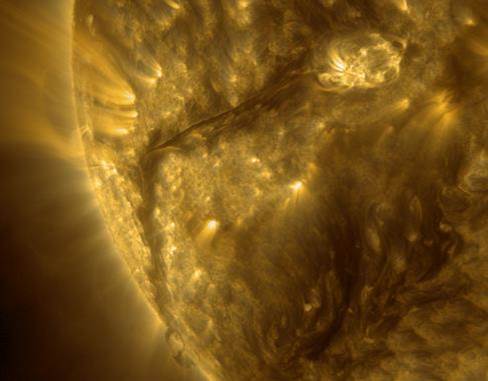
Submitted on 2015-01-28
Over the last few weeks, sky gazers have been enjoying a relatively bright and colorful comet in the northern skies. Comet Lovejoy, named after its discoverer Terry Lovejoy (Australia), has been the source of many beautiful pictures that can be admired on the web (see e.g. Spaceweather.com comet gallery).

Submitted on 2015-01-22
During the morning hours of 13 January, a rather strong M-class flare took place in active region NOAA 2257, close to the northwest limb. This sunspot group seemed deceptively simple, but harboured some opposite magnetic polarity spots close to each other. That's a configuration that often results in a flare.

Pages
Zircon - This is a contributing Drupal Theme
Design by
WeebPal.


